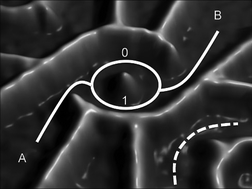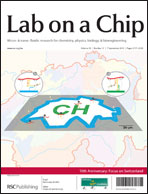A quantum mechanics lab on a chip†
Abstract
Chip technology has evolved from the desire to further shrink the size of semiconductor devices. The high sensitivity of the electronic properties of nanostructured semiconductors can be used to detect humidity, temperature, magnetic fields and other fundamental quantities. This in turn can be used to use electronic devices for fluidic or biophysical measurements and drastically reduce the volume of such measurements. Small semiconductor devices on the other hand, if measured at low enough temperatures and other appropriate boundary conditions, clearly display quantum effects. The quantum mechanical properties of such small charged islands, also called artificial atoms, can be measured by

- This article is part of the themed collection: 10 Anniversary Issue: Switzerland

 Please wait while we load your content...
Please wait while we load your content...